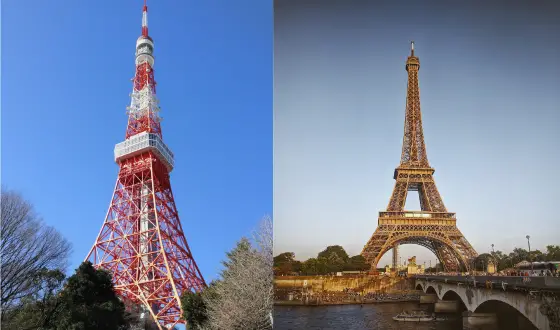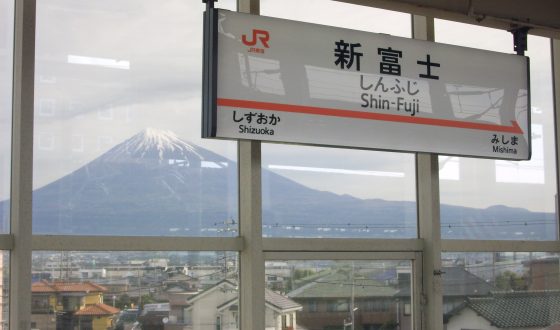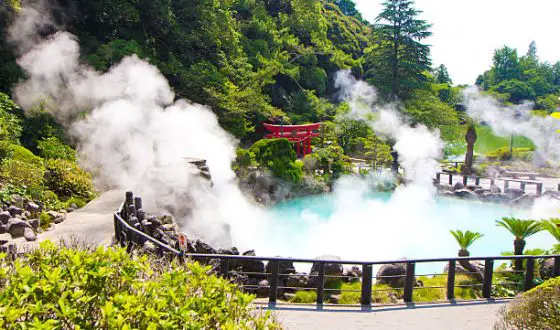19 Vibrant Festivals In Japan Throughout The Year
Festivals (matsuri) are something very typical in Japan. There are thousands of festivals taking place annually, some of them may have a history of over 1000 years. Many spiritual ceremonies, traditional foods, fireworks, music, and dance are performed, vividly reflecting the history and culture of local areas. In this location guide, we introduce a selection of the 19 most vibrant festivals in Japan all year round.
Best traditional festivals in Japan
Matsuri (祭) is the Japanese word for festival or holiday. There are countless Japanese cultural festivals. Some are sponsored by local shrines to celebrate the shrine’s deity or historical events, some may even have roots from China centuries ago. Matsuri are especially popular in summer (almost every locale has at least one matsuri in late summer/early autumn), but in fact, there are festivals almost all year round. They could be held annually or seasonally. The exact dates vary from region to region, but festival days tend to join with traditional holidays such as Setsubun or Obon.
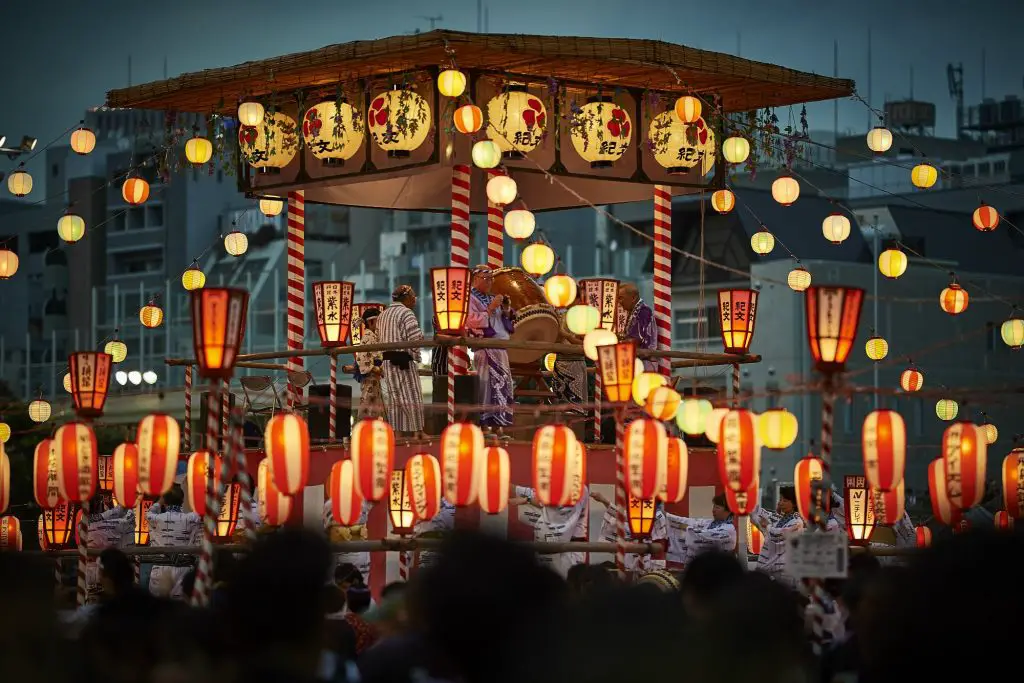
Matsuri offers a glimpse of Japanese culture that you won’t find at any average museum
An important element of Japanese festivals are spirited processions, in which decorated floats are carried through the town, accompanied by dancers and musicians. In addition to their bursts of color and energy, traditional Japanese festivals are rich in meaning. They play an essential role in maintaining cultural values as well as offering respect, gratitude, and hope for the future.
National festivals in Japan
1. Oshogatsu Matsuri
New Year, also called shōgatsu or 正月 in Japanese, is probably the most important holiday in the Land of Sun Rising. This festival was first adopted from China to celebrate the Lunar New Year. However, as Japan has changed into the Gregorian calendar since 1873 (under the Meiji period), the first day of January became the official and cultural New Year’s Day in Japan. At this time of the year, almost every business shut down. People say farewell to the old year and flock to their families to enjoy unity. To prepare for the festival, homes are cleaned and decorated with ornaments made of pine, bamboo and plum trees. People also make otoso (sweetened rice wine), mochi (rice cakes), ozoni (a soup with mochi), nanakusa gayu (seven-herb rice soup), sashimi and sushi as traditional foods.
What to do on New Year?
New Year celebration starts from midnight on December 31, when Buddhist temples all over the country ring their bells a total of 108 times. A tradition on New Year’s Eve is that people eat buckwheat noodles (called toshikoshi soba) for good health. The very first days of the year are supposed to represent the whole year. As a result, they should be full of joy, free of stress and no work should be done. On January 1st, the Japanese make an auspicious start by watching the first sunrise. This day is also considered to be the “first prayer visit” day when people visit local Shinto shrines or Buddhist temples early in the morning. Women and girls often wear their best kimono for the occasion. During the next few days, people send off New Year’s cards, play traditional games and visit friends and relatives to greet the new year together.
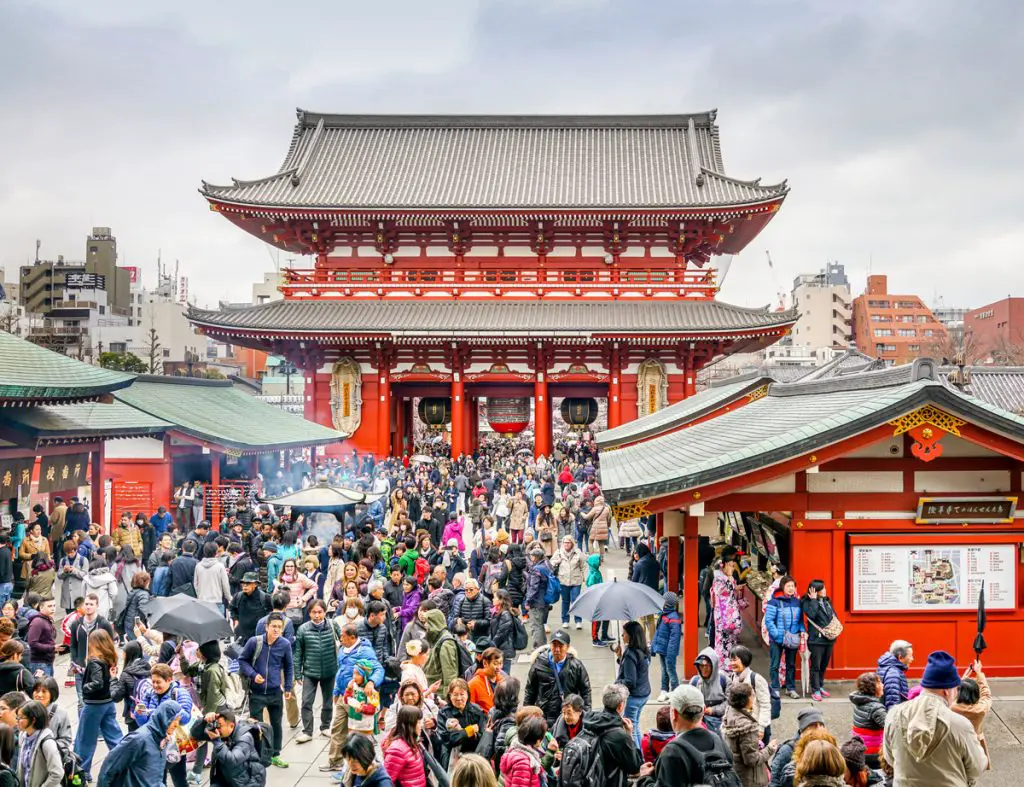
People visit shrines and temples in the morning of 1st January to pray for a year full of luck and happiness
2. Setsubun
Introduced to Japan in the 8th century, Setsubun is a Chinese custom to celebrate the coming of spring based on the ancient lunar calendar. It normally falls into February 2nd or 3rd – one day before the beginning of spring. Though it’s not a national holiday, Setsubun is widely observed across Japan.
A special ritual called Mamemaki or “bean throwing” is made to chase away evil spirits. In Eastern cultures, beans are considered to bring fortune. So on that day, roasted beans are thrown either around houses or at a family member who wears an Oni (ogre) mask, while saying “Fuku wa uchi, oni wa soto!” – Fortune in! Demons out!. In comprarison to Western culture, this gestures of mamemaki is pretty similar to the custom of throwing rice at newly married couples after a wedding.
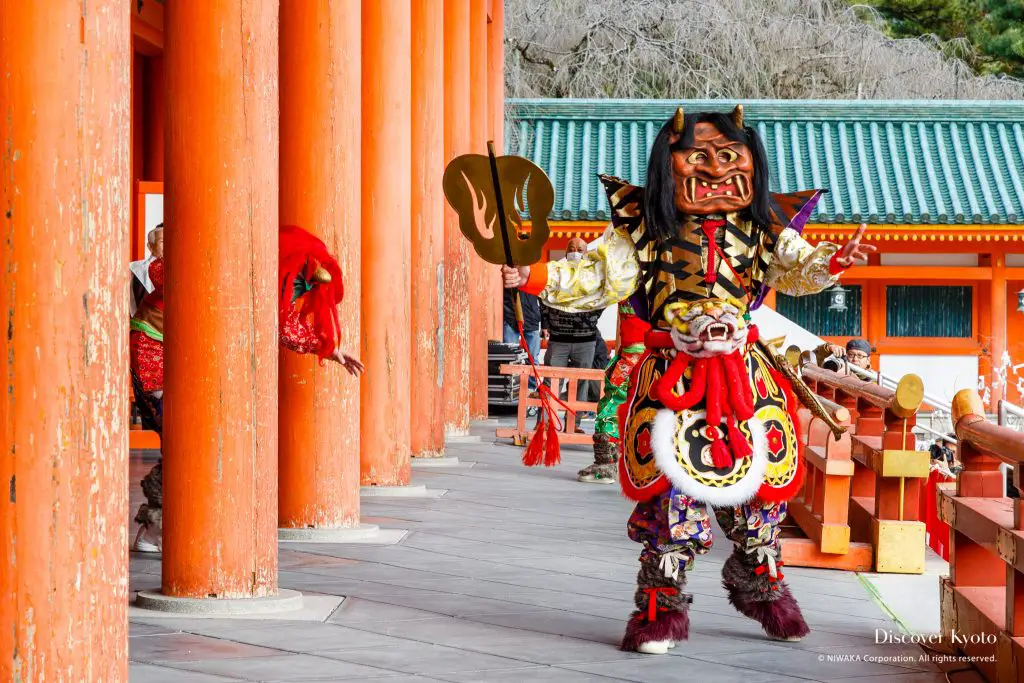
“Mamemaki” custom can be observed at manny shrines and temples
Setsubun also takes place in shrines and temples throughout the country. In big shrines, even celebrities and sumo wrestlers will be invited. Good places to see this in Tokyo are the Zojoji Temple and Senso-ji Temple in Asakusa. In Kyoto, there will have Setsubun Kyogen, Yoshida Jinja demon chase and fire festival performed during the holiday.
3. Hina Matsuri
Hina Matsuri or Doll Festival, which is observed on March 3rd, is known as girl’s day in Japan. Similar to many other Japanese culture festivals, Hina matsuri took shape in part through the influence of Chinese over 1000 years ago.
On the theme of exorcism, there was a belief that dolls had the power to control evil spirits. Hence, in the past, it was traditional to load up symbolic dolls in boats and send them out to sea, with the prayer that all bad luck, impurities and evil spirits should be transferred from girls to the dolls and float away. Another ancient custom that has been kept till today is displaying ceremonial dolls on tiers of shelves covered with scarlet carpet. Dolls are intricately crafted and dressed in ancient formal costumes, typically red cloth of wedding. Every girl has her own doll, which could be bought on her birth, or handed down from older generations as heirlooms. If a girl does not put away the dolls right after the festival, then her marriage will not go smoothly in the future.
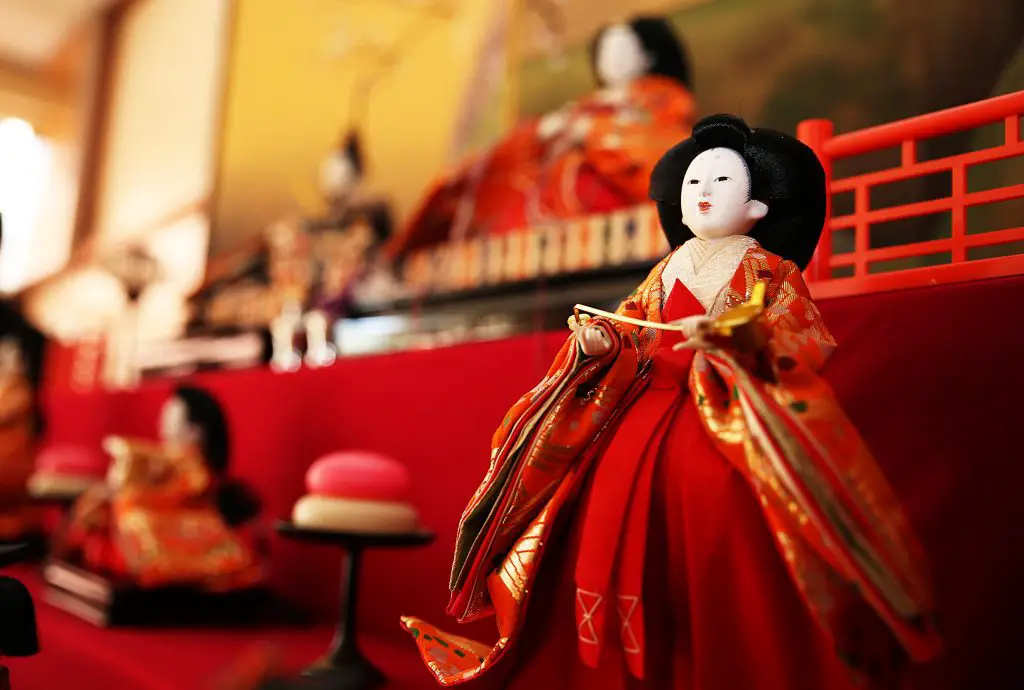
The Emperor and Empress are placed on the upper-most tier, followed by the ladies in waiting and ministers
Moreover, on Hina matsuri, people eat special foods including hishi-mochi (diamond-shaped rice cakes), shiro-zake (ground rice and sweet sake)and sekihan (rice boiled with red beans).
SEE MORE:
4. Hana Matsuri
The birthday of Gautama Buddha – founder of Buddhism, is celebrated across East Asia on 8th April in various ways. This festival is known as Hana Matsuri (flower festival) in Japan and considered to be a calm and meditative ceremony.
Baptism ceremony is the most important ritual of Hana Matsuri, in which sweet tea is poured over a statue of the infant Buddha. The statue is placed in a miniature, decorated with flowers. Little children dressed in festival robes walk in procession through the temple yard. Also, parades, parties, public gatherings, and child-centric events occur all throughout the country.
5. Kodomo no Hi
Kodomo no Hi (or Boys festival), which takes place on 5th May every year, is the final celebration in Golden Week. It has been celebrated for over a millennium in Japan and has become a national holiday since 1948. This day is for families to celebrate and pray for their sons to succeed in life.
The decoration is rich in both indoor and outdoor. People display military symbols, such as dolls clad in armor (yoroi), decorative samurai helmets (kabuto), and ornamental swords (katana) inside their houses. Another symbol of Boy’s festival is Koinobori – the carp-shaped windsocks. They are hung out in hopes that children, like the koi from the Chinese legend, will be blessed with vigor and perseverance to overcome all obstacles. The colors of the carp will represent the family members: black koinobori as the father, pink as the mother, red for the eldest son and additional colors (blue, green, orange) for other children.
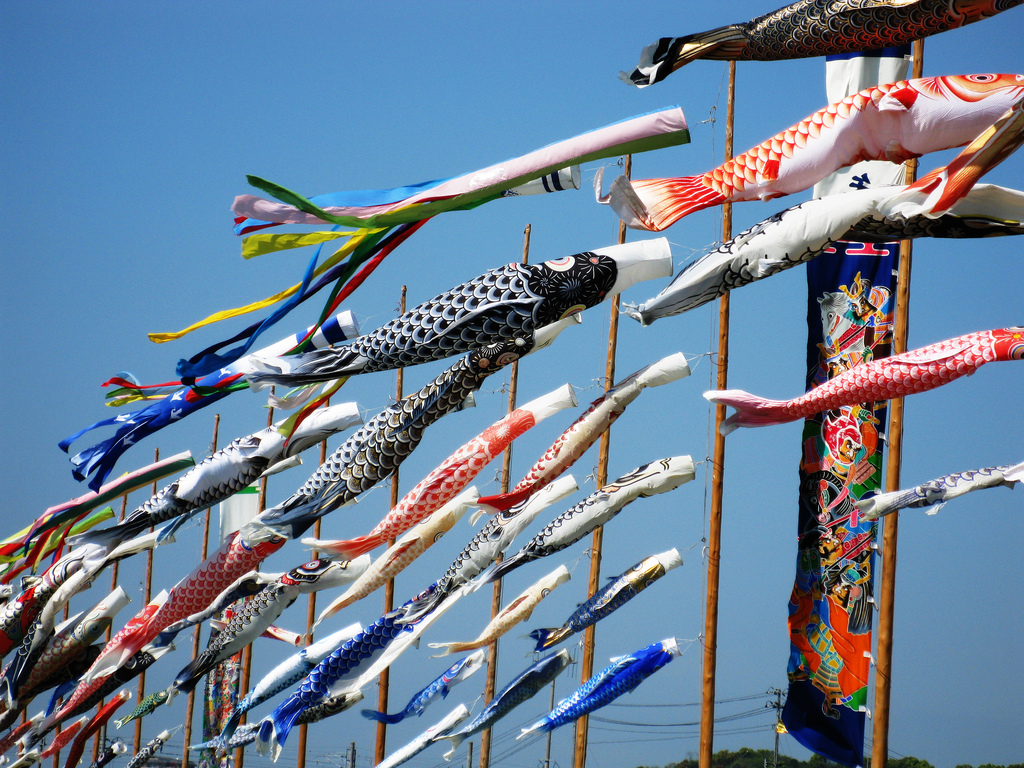
With unflagging energy and determination, the carps manage to fight its way up swift-running streams to the gates of heaven and become dragons
Traditional foods to eat on this day are kashiwa mochi (sticky rice cakes filled with red bean jam and wrapped in oak leaves) and chimaki (sticky sweet rice wrapped in an iris or bamboo leaf). Moreover, Shobu, a kind of folk remedy, is the symbolic tree of Boy’s festival. It is said to help ward off plague by fragrance. Thus, boys traditionally take shobu leaves for bathing or hang them under the eaves of houses to drive evil spirits away.
6. Tanabata Matsuri
The Tanabata (also called Star Festival), which occurs on 7th July annually, had deep roots from China and made its way to the Kyoto Imperial Palace during the Heian period. According to legend, Altair – the cowherd star and Vega – the weaver star are in love with each other. However, they are separated by the Milky Way and only able to unite once a year on a bridge of magpies.
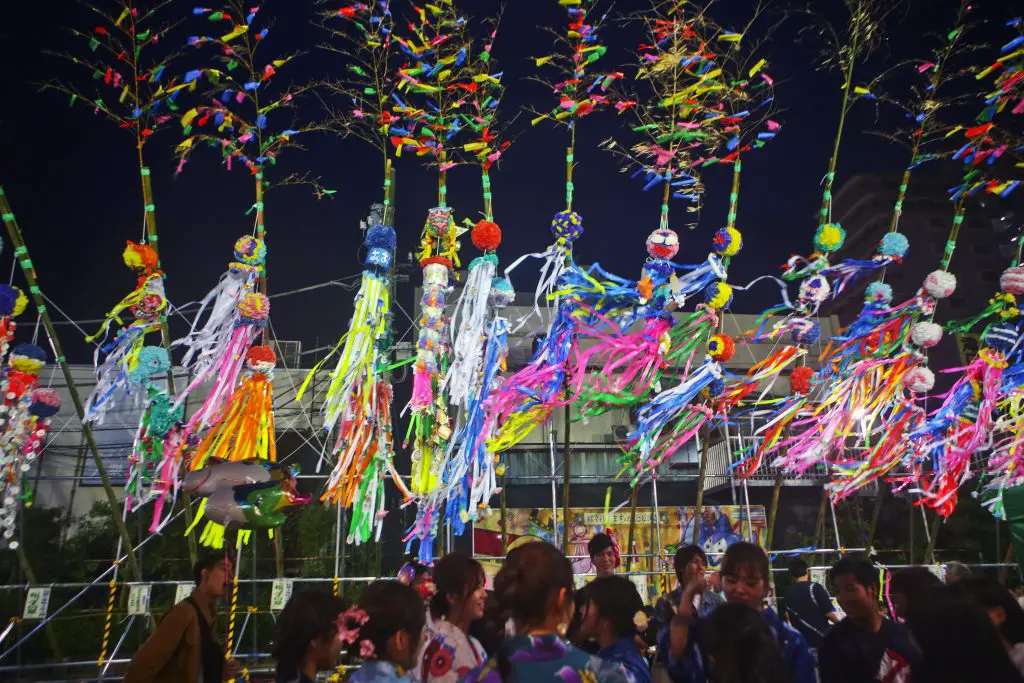
Tanzaku are hung on every streets and around houses
In Tanabata matsuri, neighborhoods, shopping arcades, train stations, and other public spaces are enlivened by vibrant ornaments and lightings. People also write down their wishes on long, narrow strips of colorful paper called “tanzaku”, then hang them on bamboo branches. Girls pray to the Weaver for weaving skill while boys pray to the Cowherd for skill in handwriting and success in their studies. Tanabata festivals are celebrated throughout Japan. Among the biggest and most famous ones are Miyagi prefecture’s “Sendai Tanabata Festival”, Kanagawa prefecture’s “Shonan Hiratsuka Tanabata Festival” and Aichi Prefecture’s “Anjo Tanabata Festival”.
7. Obon Matsuri
Obon festival, which happens in the middle of the 7th lunar month (13th-15th July), is an originating Buddhist custom to honor the spirits of the dead. People believe that every year, the ancestors’ spirits return to this world to visit their families. That’s why Obon is also known as the “Festival of Souls” or the “Festival of the Dead”. On this occasion, people typically return to their hometowns to visit ancestral graves. Houses are cleaned and family graves are carefully tended. At night, lanterns shed a subdued light throughout the house to guide the spirits. The 500 year-old dance – Bon Odori and traditional songs are performed on evenings around the 15th. Also, on the last day, okuri-dango (a type of farewell rice dumplings) is offered to the spirit-guests before they come back to Meido – the mysterious celestial world of the dead.
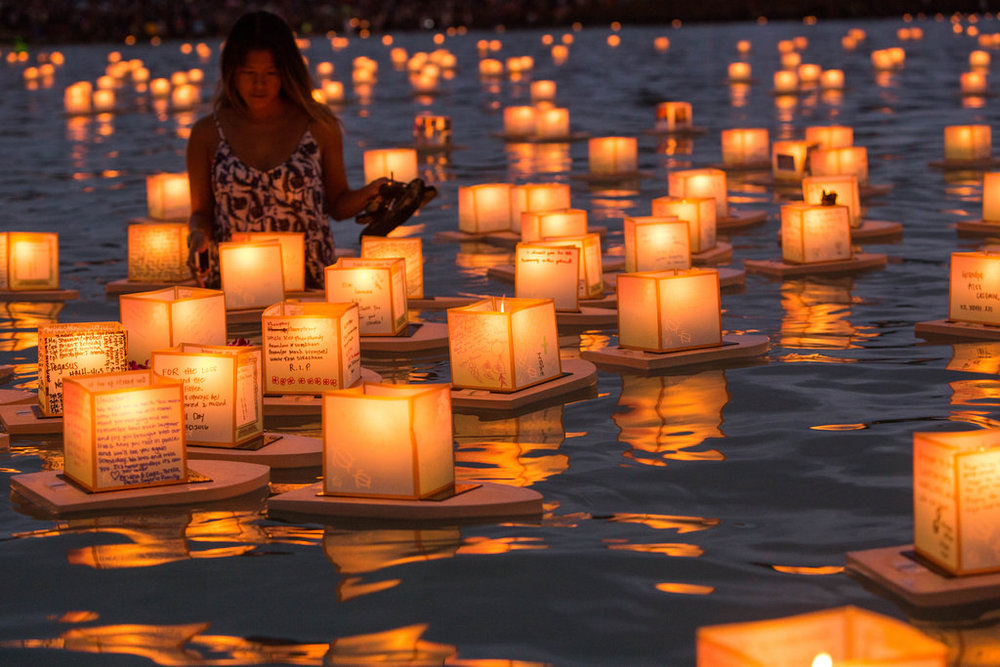
In some regions, thousands of lanterns are set afloat at dusk to commemorate the souls of the dead
8. Sakura Matsuri
Hanami (花見, flower viewing) is the traditional custom of enjoying the beauty of blossoms. “Hana” literally means flowers, but it generally indicates cherry blossom/ sakura – the national flower of Japan. As the blooms are very fleeting (often lasting no more than two weeks), they become the symbol of impermanent beauty and a reminder of “living in the present moment”. Sakura festivals take place throughout Japan at various times during spring (the first place to see is Okinawa island) and reach their peak in late March to April in the Honshu region. Gorgeous flowers are the main attraction at the cherry blossom festivals. Besides, there are a variety of traditional Japanese performances presented during these festivals.
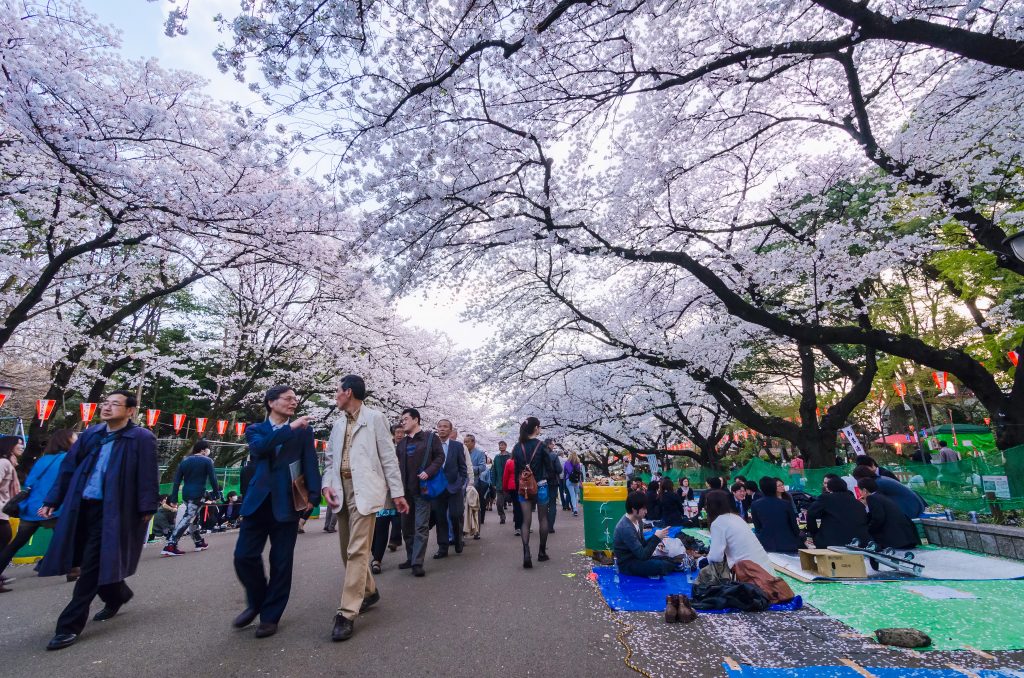
Thousands of people flock to parks for tea ceremonies held under the cherry trees and the light-up at night
Local festivals
1. Yuki Sapporo Snow festival (Hokkaido)
Hokkaido, the up north area of Japan, is well-known for not only the high quality of its seafood but also the largest winter event held in its capital – Sapporo City in early February. The festival originally dated back in 1950 when high school students built a few snow statues in Odori Park. After that, the idea was spreaded and the event has got bigger every year with more displays in the larger sites. Last year, more than 2 million visitors from Japan and abroad came to see spectacular snow and ice sculptures.
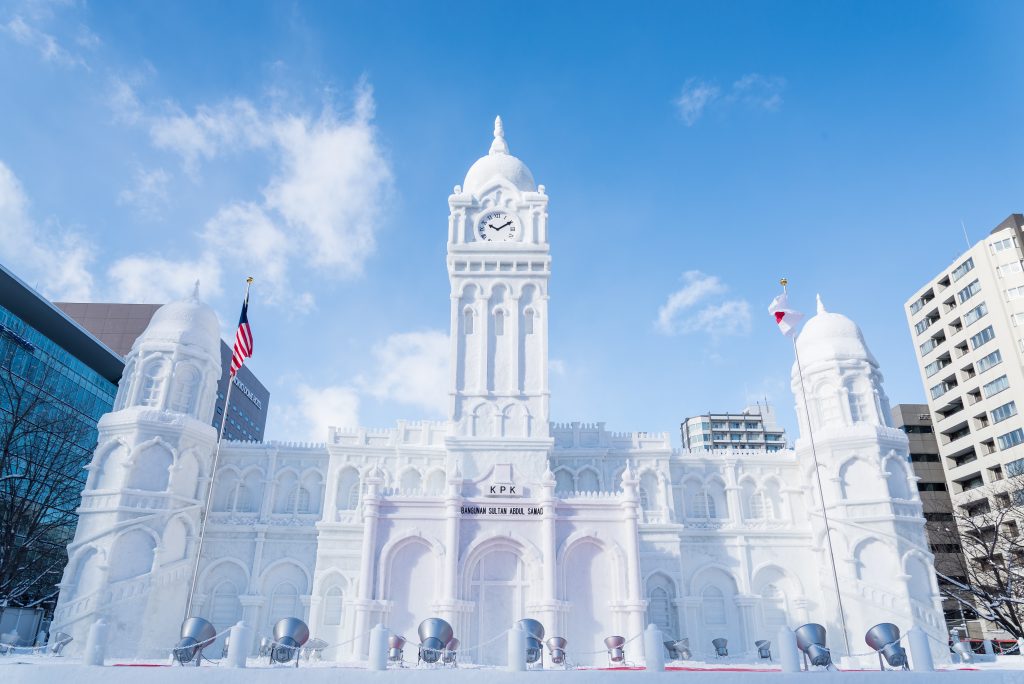
Spectators marvel at over-50-feet-high snow sculptures
Snowy showcase is the main attraction of this Japanese festival. Hundreds of statues depicting superheroes and popular characters are illuminated each evening, creating a magical world. The festival also hosts several concerts and other events like snowball fights, snow slides, ice bars, etc. The main three display sites are the Odori Site, Susukino Site ( for snow showpieces and entertaining activities) and TsuDome Site (for snow slides, snow rafting).
2. Aoi Matsuri (Kyoto)
Aoi Matsuri, a historical festival from the 7th century, is held annually in Kyoto on May 15th. The main celebration is a grand parade, in which hundreds of locals dress in the aristocratic style and accompany the Saio from the Imperial Palace to the Kamo Shrines. Saio is a young female member of the imperial family. She has been thoroughly selected and gone through purification ceremonies before the festival. During festivals, she’s in charge of performing rituals at the shrines.
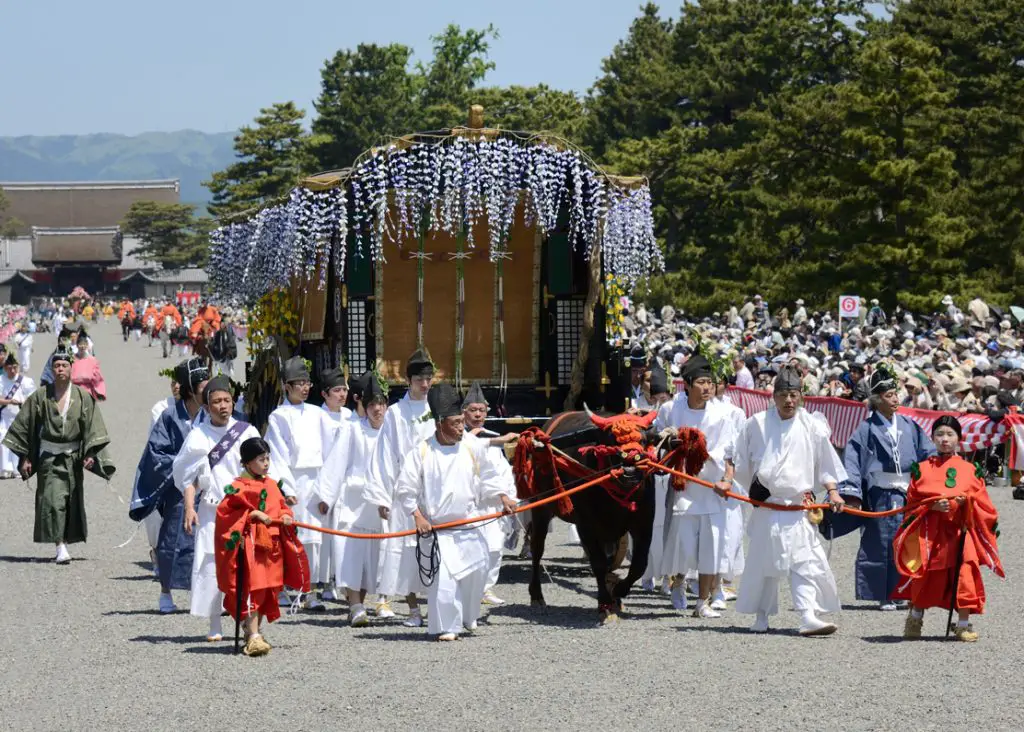
Saio is taken through the procession on a palanquin
3. Sanja Matsuri (Tokyo)
Held annually on the third weekend of May in Asakusa Shrine, Sanja is the biggest and wildest festival in Tokyo, visited by over 2 million people in 3 days. Asakusa is a Buddhist temple dating back to 645. According to the legend, a statue of Kannon – the goddess of mercy, was caught by the three brothers Hinokuma, Hamanari and Takenari while they’re fishing. The statue returned though the fishmens had attempted to put it back to the river. At the end, they decided to go back to their village and built a temple to house the statue.
The festival begins with Dai Gyoretsu parade, Geisha and taiko (Japanese drum) performances in the neighbourhood of Asakusa. On the final day, three large-sized portable shrines (mikoshi) are added to the parade. Each mikoshi weighs around one ton and costs 40 million yen to construct. Though the festival is chaotic and wild, it’s a great opportunity to feel the real vibe of Tokyo’s neighbourhood culture.
4. Gion Matsuri (Kyoto)
First originated as a religious ritual in Kyoto in response to a plague, nowadays, Gion Matsuri is the city’s largest annual festival taking place over the entire month of July. There are many different events, but the grand procession of floats (Yamaboko Junko) on July 17th is particularly spectacular. From 6pm – 11pm, streets are cleared for food stands, drink vendors, traditional yukata robes and other festival hallmarks. The event was recognized as an Intangible Cultural Heritage of Humanity in 2009 because of its immense values.
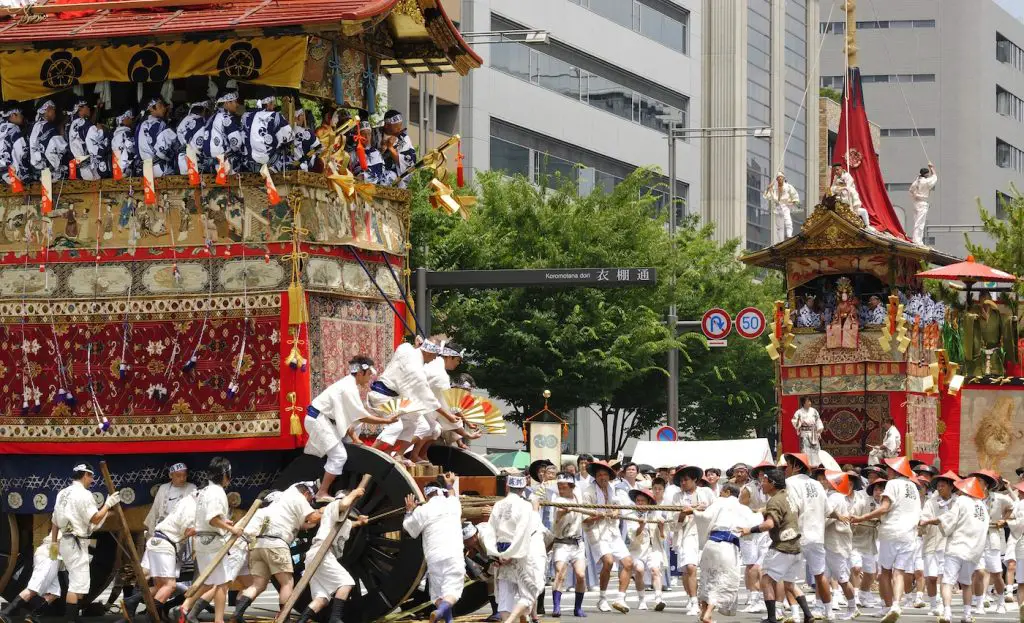
Hundreds of locals participant in the great parade
5. Kanda Matsuri (Tokyo)
Among the three biggest festivals in Tokyo, Kanda Matsuri is held at an ancient and powerful shrine – Kanda Myojin in the middle of May. It started as a ritual during the Edo Period (1603-1867) to celebrate wealth and good fortune under the new regime. This mid-May festival features processions of ornate portable shrines and participants who are clothed in many-layered kimonos and luxurious designs.
6. Tenjin Matsuri (Osaka)
Tenjin Matsuri occurs on July 24th – 25th every year at Tenmangu Shrine (honoring Japan’s god of learning and art) to pray for the safety and prosperity of Osaka. Since it is the biggest event in the year, thousands of drummers, dancers, and performers dressed in traditional clothing part-take in the procession. At night, a parade of more than 100 illuminated boats on the Okawa River and a lengthy fireworks display create a wonderful occasion to enjoy the hot summer day.
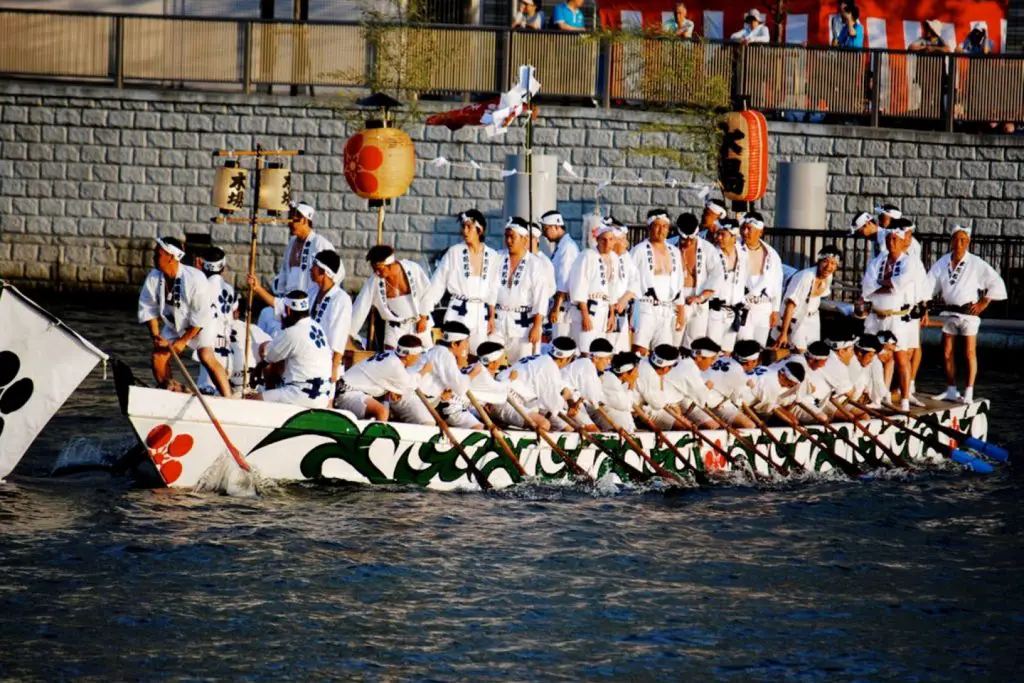
The festivity is filled with traditional costumes, spectacular processions and a celebratory atmosphere
7. Nagasaki lantern festival
Though the Japanese celebrates New Year as in Western calendar, Lunar New Year is still observed in some parts of the country by Chinese residents, shrines and temples. The Nagasaki Lantern Festival, boasted as the biggest lantern festival in Japan, takes place every year in Nagasaki City for 15 days (from 25th January to 8th February) to celebrate the Chinese New Year. This festival was started centuries ago by Chinese residents in Nagasaki’s Chinatown, one of three biggest Chinatowns in Japan. In 1994, it became an official annual event of the city. During those days, over 15.000 colourful lanterns and lights adorn the entire city and entertain visitors. There are also a great number of performances, food stalls and souvenir shops reflecting traditional flavour of China.
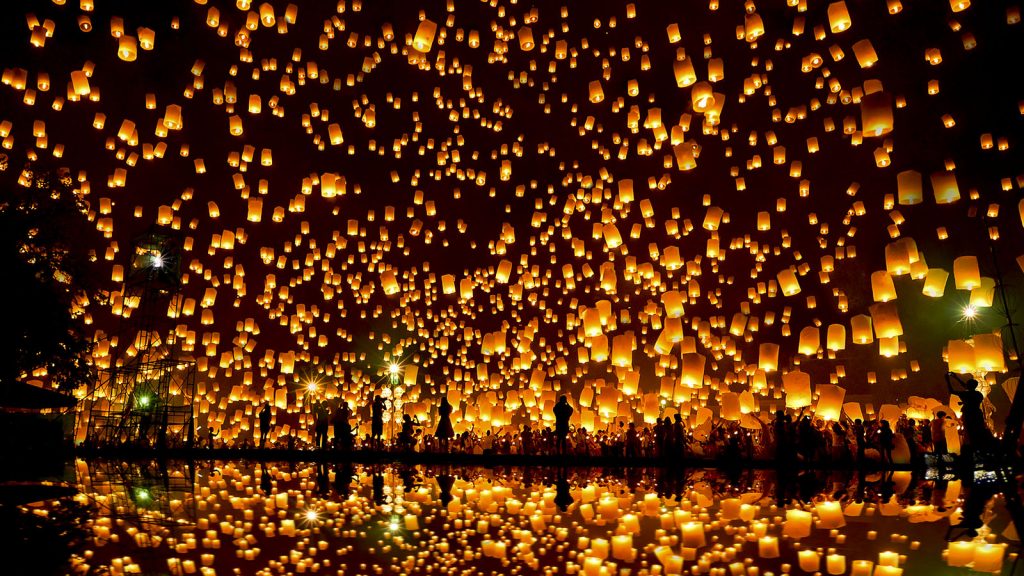
Nagasaki lantern festival is the result of strong influence from China with their trading history
8. Nebuta Matsuri (Aomori)
Nebuta Matsuri of Aomori City, held every year from August 2nd to 7th. Its highlights are giant lantern floats, which take an entire year to design and construct. The lanterns are made from a wire frame and painted washi papers, depicting gods, historical or mythical figures in both Japanese and Chinese culture. Floats are wheeled out onto the streets of downtown Aomori for a parade, accompanied by teams of taiko drummers, musicians and dancers. Locals and visitors come from all around to join in the dancing. If you want to dance, you have to wear the traditional dancing costume, which could be bought at convenience stores with 7000 yen or rented with 4000 yen.
9. Takayama Matsuri (Kyoto)
Celebrated twice a year in spring and autumn in the old town of Takayama, Takayama is touted as one of Japan’s three most beautiful matsuri. Spring Festival (April 14th – 15th ) is held by Hie Shrine in the southern half of the town. Likewise, Autumn Festival (October 9th – 10th) is the annual festival of the Hachiman – a shrine in Takayama’s northern half. Both festivals offer displays of floats from morning to afternoon. An unique characteristic of Takayama is the Karakuri performance. Karakuri ningyo are sophisticated mechanical dolls that can move and dance. The performances are held on both days of the festival at dedicated times and places.
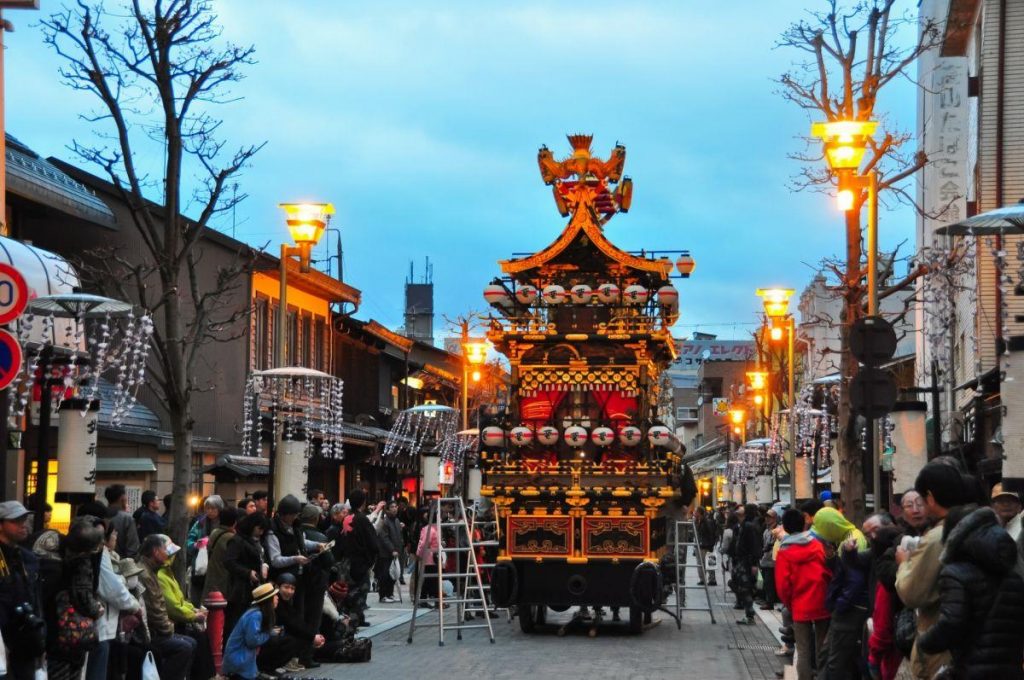
Japanese cultural festivals are not separated from procession of floating boats
10. Chichibu night festival
Dating back at least 300 years, Chichibu night festival is the early December festival honoring the Japanese god for his protection. The massive floats, colorful lanterns, kabuki performances and fireworks display attract locals and visitors alike. Floats are ornately decorated with lanterns, tapestries and gilded wood carvings and are accompanied by drum and flute music. What’s more, people also try the hot rice wine offered along streets to combat the cold of December night.
The festival takes place in the town of Chichibu, just 90 minutes drive away from central Tokyo. So try to catch the last trains back into Tokyo as the town itself doesn’t have many accommodation options.
11. Awa Odori Matsuri (Tokushima)
Awa odori is probably the most popular dance festival in Japan, which coincides with part of Obon festival. Its song lyrics have been common for 400 years: “Fools dance and fools watch, if both are fools, you might as well dance”. That’s why this festival is also known as the “Fool’s dance”.

People dance in a procession, playing traditional musical instruments as they go
Between August 12th and 15th, thousands of dancers and fun seekers flock to Tokushima to join in the event. Women are dressed in yukata, while men wear happi. There are also multiple different sites with either free or paid seating for everyone to dance. Tickets fall between 800 and 2800 yen for a two-hour performance and can be purchased at convenience stores nationwide.
SEE MORE:
- Where To Stay In Osaka? – Useful Tips For Foreigners
- Homestay In Japan: Ultimate Guide For Foreigners
FAQs
1. What is the famous festival in Japan?
Japan is home to stunning cultural festivals, which date back over a thousand years, and attract spectators from all over the world. Some of the best festivals in Japan are:
- Obon Matsuri
- Gion Festival (Kyoto)
- Sapporo Snow Festival (Hokkaido)
- Kanda Matsuri (Tokyo)
- Sakura Matsuri
2. What is the most celebrated festival in Japan?
Above all, Oshogatsu (New Year) is definitely the most celebrated festival in Japan. This is a chance for many Japanese people to actively participate in community gatherings and preserve customs that have been passed down through the generations. Therefore, bringing prosperity in the upcoming year is taken very seriously and preparation has been made weeks before.
3. How many festivals are in Japan?
Japan has more matsuri than almost any other country in the world. No one knows for sure how many festivals take place in Japan over the course of the year, but estimates vary from 100,000 to 300,000 – from huge festivals with crowds of people to smaller and more modest festivals with only the neighbors of the neighborhood but with a lot of charm as well.
4. Why are there so many festivals in Japan?
For centuries, festivals have been essential to the fabric of Japan. They are held in distinct seasons to thank the gods for the blessings of nature and to express hope for the future. People pray for a new start in spring, welcome spirits of ancestors in summer, ask for good harvests in autumn and thank for a year full of fortune and hope in winter. The result is a wide variety of festivities and rituals held throughout the year, even today.
Besides, another reason why there are so many festivals in Japan is that each temple has its own festival in the year (not to mention other regional and national holidays) and there are thousands upon thousands of temples and shrines across the country.
Conclusion
In conclusion, Festivals in Japan – in all their color, tradition, and exuberance – are spectacular for every tourist. Visiting Japan during the holidays can be both rewarding and frustrating. Hope you find this Japan festival list helpful. And if you still have questions, please leave below. We’re happy to answer!


